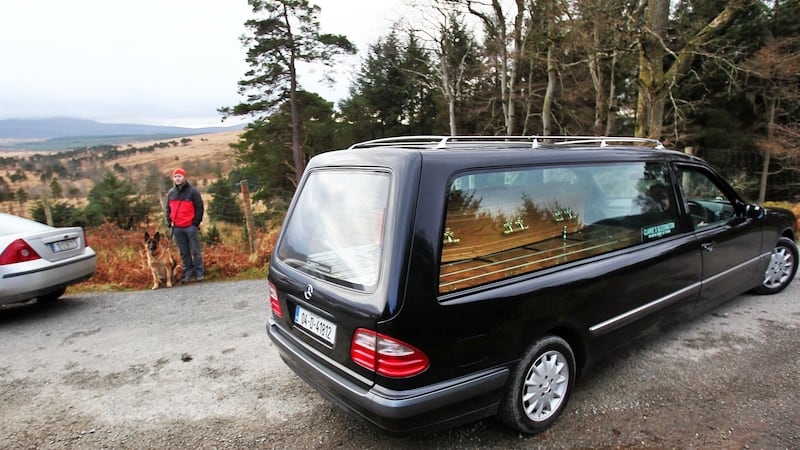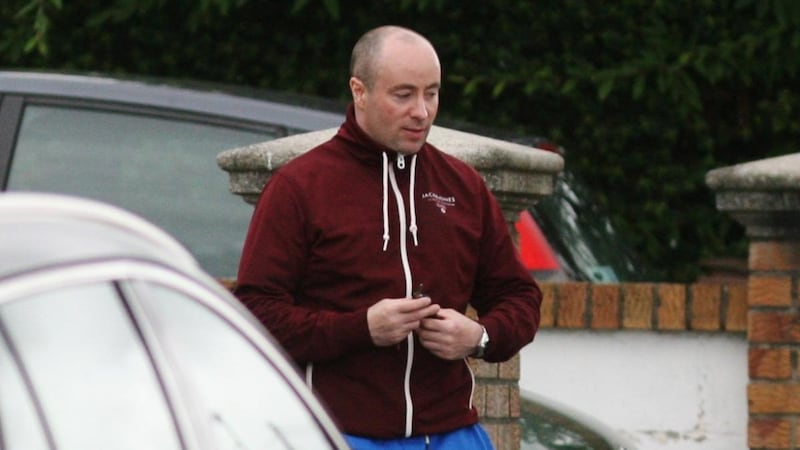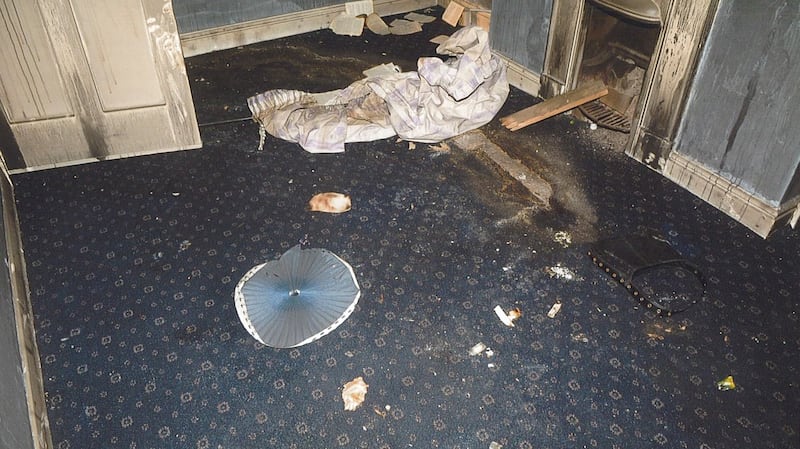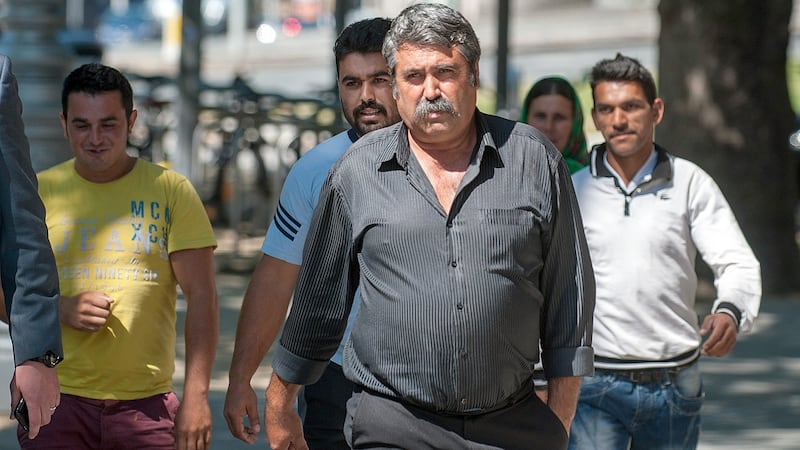A murder is committed. The Irish media then usually goes one of two ways. The killing can gain traction and become "a big story" along the lines of the cases of Rachel O'Reilly, Siobhan Kearney, Celine Cawley, Sophie Toscan du Plantier and others. Or, after being reported on for a matter of days, the story disappears from sight.
Why do some murder cases attract saturation coverage – sometimes for decades – while the killings of other people are forgotten? To pose a blunt and callous question; what makes “a big murder”?
The Republic has become inured to gangland violence. There was a time when every fatal shooting would appear on most newspaper front pages the following day. That era is gone.
But what still fascinates, sadly, are the violent killings of women. In particular, women who are middle class, mothers and Irish, and whose lives are taken by men they share their home with. Social media lights up and crime reporters brace for calls and messages from all quarters asking “what really happened to that woman?”

We tend to be shocked and appalled by the murders of women in their homes, inside family units, apparently like our own.
Marioara Rostas didn’t fit that bill. She wasn’t middle class, she wasn’t Irish, she had no children and no partner. She was an 18-year-old Romanian immigrant and a member of the Roma community. She didn’t meet the “big murder” criteria. Social media didn’t light up. There were no protests about reclaiming the streets for women and few people called to ask “what really happened”.
At first, hers was a missing person’s case. It took months before it was established that she had been abducted and murdered. But even when those details emerged, the killing of Marioara Rostas did not garner as much attention as other murders. Her life didn’t seem to matter as much.
Now journalists Stephen Breen and Owen Conlon have written the terrifying, and often heartbreaking, definitive account of the last days of Marioara's life and the subsequent investigation of her murder.
Contract killings
Breen and Conlon are both experienced news and crime journalists with the Irish Sun. They are also best-selling crime authors. They wrote The Cartel, a book about the Kinahan gang, and their latest work, The Hitmen: The Shocking True Story of a Family of Killers for Hire, returns to gangland and includes the story of Marioara's life and murder. The book, published by Penguin this week, details how Alan Wilson and his cousins – brothers Eric, Keith and John – and nephew Luke were involved in gangland contract killings or attempted killings, charging fees up to €100,000 per murder.
Breen and Conlon’s book sets out, in forensic detail and riveting storytelling, how a deprived teenager with no English was lured off a Dublin street to her death by a gangland gun for hire with the promise of €10 and a trip to McDonald’s. The State later contended in a court case that Alan Wilson was that man.
From a family of 13 siblings, born in Timisoara in western Romania, Marioara arrived in Ireland on December 7th, 2007. She was joining her parents and some of her siblings, who had arrived in Ireland three months earlier.
They had been in the Republic before, one of a number of Roma families who set up a makeshift camp on a roundabout near the M50 in Ballymun, north Dublin, in 2007. After the high-profile removal of the camp, Marioara’s family was among those repatriated but they would return later that year.
Marioara was begging from passing motorists on the junction of Lombard Street and Pearse Street in Dublin’s south inner city on the afternoon of Sunday January 6th, 2008 when she was taken.
A driver pulled up and spoke some basic words to her in her native tongue, offering to bring her for a McDonald’s meal and to return her within minutes. She went with him and was never seen alive by her family again. Her brother Dumitru (13) was with her at the time and later told gardaí he believed Marioara “felt inspired by the fact that she could get [a meal] from McDonald’s and €10”. Their father was close by but had gone to get food when his daughter was taken.

Breen and Conlon describe in excruciating detail how helpless and alone the family was during the crucial hours after their daughter was taken.
Desperate
Not knowing what to do, they hung around at the junction for hours in the desperate hope she may come back. When she didn’t, they went to a Garda station where a complete inability to communicate meant their missing person’s report wasn’t taken. They went back to the shell of a house, with no running water or electricity, they were living in near Donabate, north Co Dublin, and waited in vain for her to turn up or contact them.
In desperation Marioara had tried to contact the family, by calling a mobile phone held by a family member back in Romania. She said she had been abducted and wanted her parents to come and collect her. She didn’t know where she was and while she tried to read a street sign, she could only make out some letters. When the family learned of this in Dublin they waited for another 24 hours for more news before going back into the city centre. Finally, with the help of a Garda-arranged interpreter, they managed to tell their story and lodge a missing person’s report some 72 hours after their daughter had vanished without trace and with no apparent motive.

After several months the investigation ran into the ground and, when an appeal for information was made on RTÉ's Crimecall TV show, the phones were eerily silent after the programme. Then came two anonymous calls: one in June, a month after the Crimecall episode, and one in September. Between them, the callers nominated the same man as chief suspect: Dubliner Alan Wilson, a nephew of Martin Cahill, the murdered criminal known as The General. One of the calls also claimed Marioara, "the foreign girl", had been shot in a house in Dublin 8 that was damaged by fire just after the alleged killing.
A 10-day forensic examination of a fire-damaged house identified by gardaí on Brabazon Street, Dublin 8, was carried out and evidence was found of shots having been fired there. Wilson sometimes stayed there as his sister Maxine and her partner Fergus O’Hanlon lived there at the time of Marioara’s disappearance. Through leaning on Wilson’s sister and her partner O’Hanlon, gardaí began to extract other snippets of information. During their investigation gardai were told by people they interviewed that the killer shot Marioara repeatedly in the head because he “saw the devil in her eyes”. But they still had to try and prove who that killer was.
Remains
O’Hanlon eventually told gardaí he saw Marioara’s remains in the Brabazon Street house. He added that he helped Wilson clean up the scene and dispose of the body because he feared Wilson, who stood over him with a loaded and cocked gun, was going to kill him.
In January 2012 he led gardaí to a remote location in Kippure Forest, Co Wicklow, where they found a shallow grave containing Marioara’s body. It was in the foetal position and wrapped in plastic bound with duct tape. Her remains were repatriated to Romania, where she was given a Christian burial – the only thing her distraught family could do for her. The head of the murder investigation, Det Supt Michael Cryan, and the family’s liaison officer, Det Insp Paul Murphy, travelled for the funeral. In Dublin the investigation continued.

Alan Wilson was brought before the Dublin courts for a murder trial in the summer of 2014. O’Hanlon was the State’s star witness.
“He had a rifle in his hand,” O’Hanlon told the court of Wilson. “He said: ‘Come here. I want to show you something.’ There was the body of the dead girl there, in the centre of the room, lying on her back, staring at the ceiling. She looked like she was wide awake. She had a hole in her forehead and blood running down her nose.”
However, it emerged in the court O’Hanlon had previously lied to gardaí about being shot. His credibility was thrown into question during a case that depended mainly on his evidence. The jury acquitted Wilson. Nobody has ever been brought to justice for the violent death of Marioara Rostas.
For his part, Alan Wilson (42) is currently in prison for his role in a foiled conspiracy to kill Dubliner Gary Hanley, a target of the Kinahan cartel, in 2017. Wilson warned his accomplices: “If this fella survives we get no pay.” His release date is June of next year.
The Hitmen: The Shocking True Story of a Family of Killers for Hire by Stephen Breen and Owen Conlon is published by Penguin











